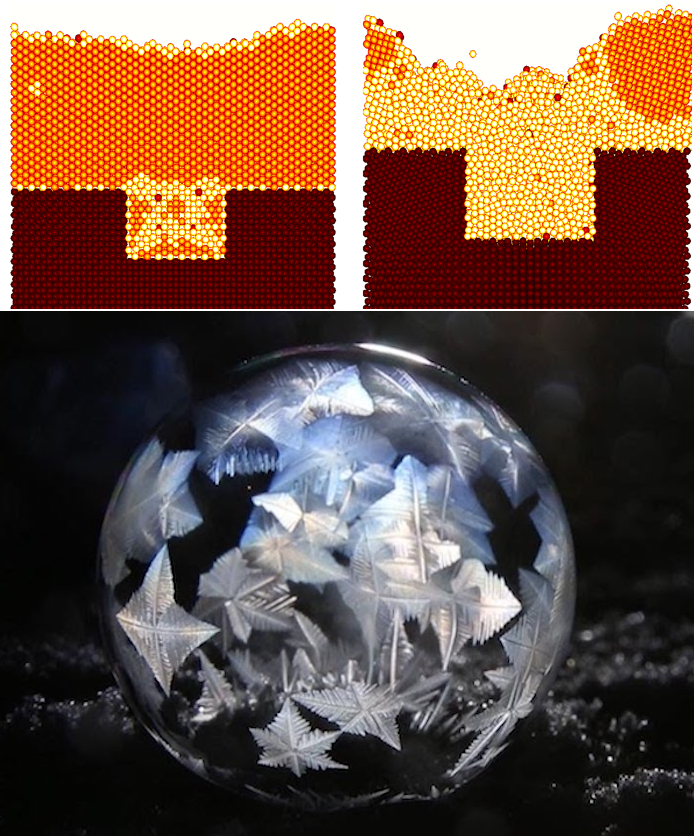
László Gránásy1,2, Gyula Tóth3, James A. Warren4, Frigyes Podmaniczky1, György Tegze1, László Rátkai1, Tamás Pusztai1
1Institute for Solid State Physics and Optics, Wigner Research Centre for Physics, P.O. Box 49, Budapest H-1525, Hungary
2BCAST, Brunel University, Uxbridge, Middlesex, UB8 3PH, United Kingdom
3Department of Mathematical Sciences, Loughborough University, Loughborough, Leicestershire, LE11 3TU, U.K.
4Metallurgy Division, National Institute of Standards and Technology, Gaithersburg, Maryland 20899, USA
We review how phase-field models contributed to the understanding of various aspects of crystal nucleation including homogeneous and heterogeneous processes, and their role in microstructure evolution. We recall results obtained both by the conventional phase-field approaches that rely on spatially averaged (coarse grained) order parameters in capturing freezing, and by the recently developed phase-field crystal models that work on the molecular scale, while employing time averaged particle densities, and are regarded as simple dynamical density functional theories of classical particles. Besides simpler cases of homogeneous and heterogeneous nucleation, phenomena addressed by these techniques include precursor assisted nucleation, nucleation in eutectic and phase separating systems, phase selection via competing nucleation processes, growth front nucleation (a process, in which grains of new orientations form at the solidification front) yielding crystal sheaves and spherulites, and transition between the growth controlled cellular and the nucleation dominated equiaxial solidification morphologies.


